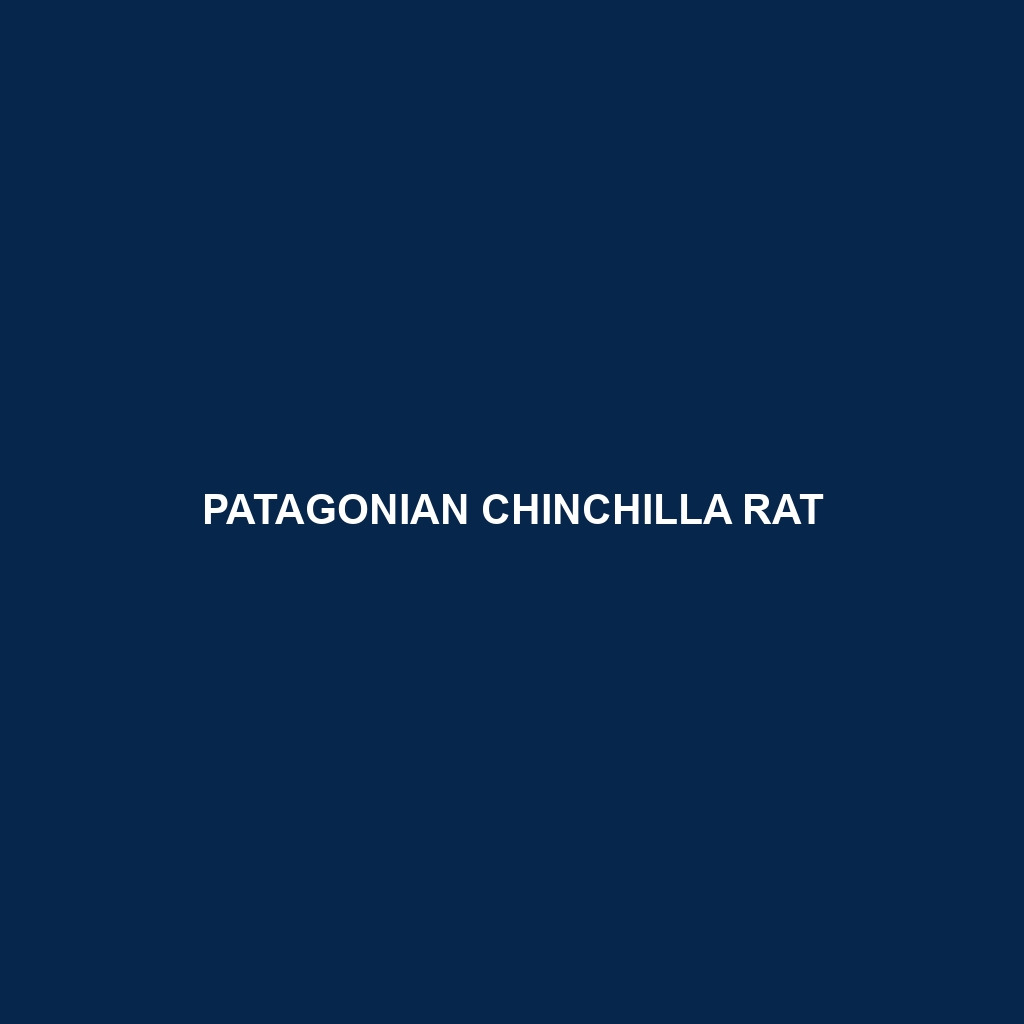Patagonian Chinchilla Rat Overview
Common Name: Patagonian Chinchilla Rat
Scientific Name: Abrocoma cinereus
Habitat
The Patagonian Chinchilla Rat, also known as Abrocoma cinereus, is primarily found in the arid and semi-arid regions of Argentina, specifically in the Patagonian steppe. This rodent inhabits rocky areas and shrublands, often residing in burrows or crevices that provide shelter from predators and environmental extremes. They favor altitudes ranging from 1,000 to 2,500 meters, showing adaptability to various microhabitats within their geographical range.
Physical Characteristics
The Patagonian Chinchilla Rat is a medium-sized rodent, measuring around 30 to 35 centimeters in length with a tail that can extend up to 25 centimeters. Its fur is dense and soft, typically colored in shades of gray with lighter underparts, which provide excellent camouflage against its rocky surroundings. Notable features include large, rounded ears and large eyes that enhance its vision during twilight hours. Their sturdy hind limbs and sharp claws are adapted for climbing and digging.
Behavior
Patagonian Chinchilla Rats are primarily nocturnal, emerging at dusk to forage for food. They are social creatures and often found in small family groups. Communication among individuals involves a series of vocalizations and scent markings. These rodents are known for their agility and are excellent climbers, often seeking refuge in elevated locations during the day. When threatened, they exhibit a unique behavior of freezing to avoid detection by predators.
Diet
The diet of the Patagonian Chinchilla Rat is herbivorous, mainly consisting of a variety of grasses, leaves, and seeds. They are known to forage extensively in their habitats, using their sharp incisors to chew through tough plant material. During dry seasons, they rely on stored food items, showcasing a remarkable ability to adapt their feeding habits based on the availability of resources.
Reproduction
Patagonian Chinchilla Rats have a breeding season that typically occurs from late spring to early summer. Females can give birth to litters of 2 to 6 young after a gestation period of about 40 days. Offspring are born semi-precocial, meaning they are relatively advanced at birth and begin to explore their surroundings shortly after. Parental care is communal, often involving multiple adults caring for the young.
Conservation Status
Currently, the Patagonian Chinchilla Rat is classified as “Near Threatened” by the IUCN Red List. Habitat loss due to agricultural expansion and urbanization poses significant threats to their population. Conservation efforts are underway to protect these unique rodents and their natural habitats.
Interesting Facts
– The Patagonian Chinchilla Rat is closely related to chinchillas and shares similar adaptations suited for rocky environments.
– These rodents can leap up to two meters in a single bound, making them agile and difficult for predators to catch.
Role in Ecosystem
As herbivores, Patagonian Chinchilla Rats play a crucial role in their ecosystem by helping to control plant growth and seed dispersal. Their burrowing activity aerates the soil and aids in nutrient cycling. Additionally, they serve as prey for various predators, making them an integral part of the food web in the Patagonian ecosystem.
